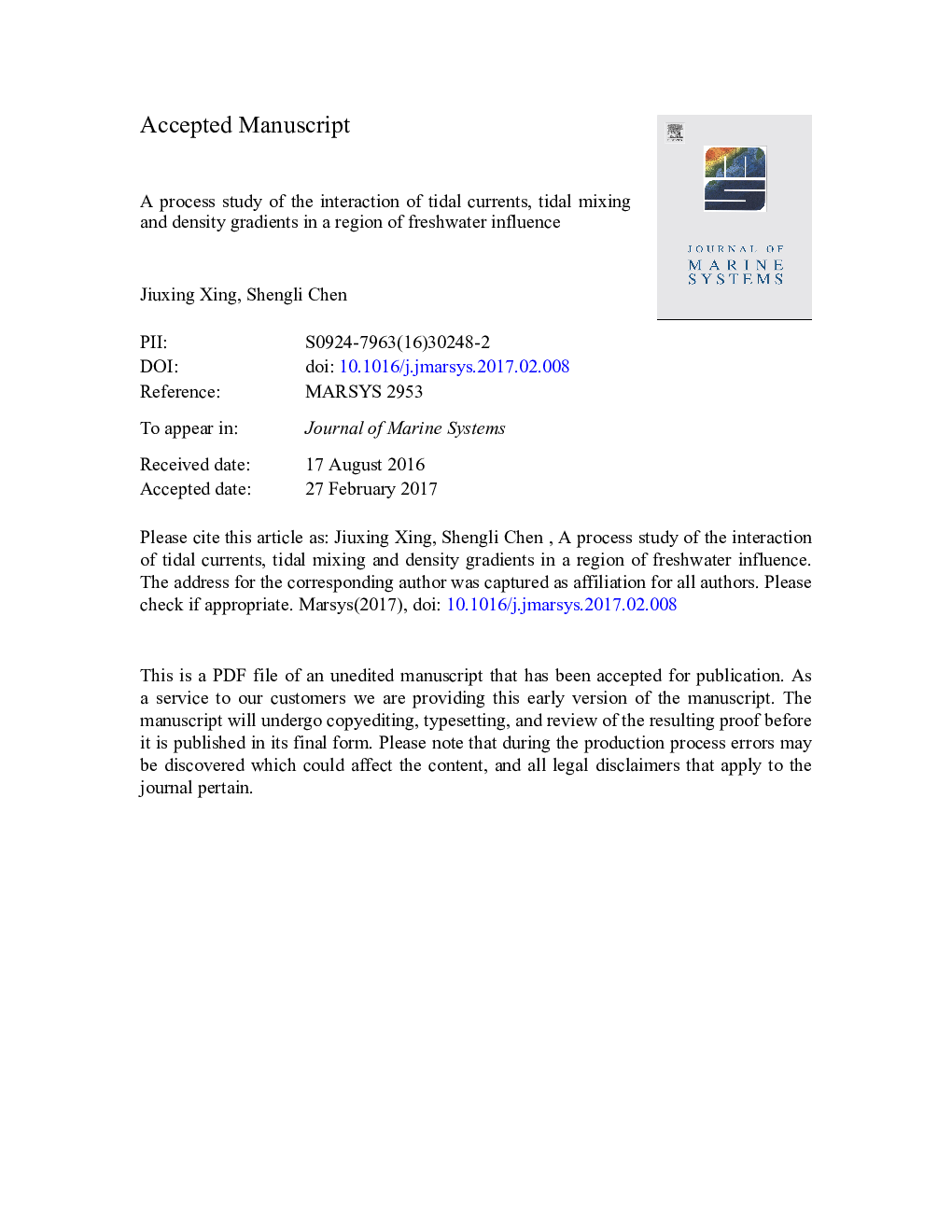| Article ID | Journal | Published Year | Pages | File Type |
|---|---|---|---|---|
| 5765989 | Journal of Marine Systems | 2017 | 32 Pages |
Abstract
A three dimensional unstructured grid model of the west coast of Britain is used to study the process of the interaction of tidal currents, tidal mixing and density gradient in the Liverpool Bay region. Calculations with M2 tidal forcing and omitting freshwater discharge show that tidal currents in the region are strong (of order 1 msâ 1), with tidal current ellipses essentially rectilinear in the surface and bottom. In the absence of tidal forcing, the freshwater is confined to a thin surface layer. With the inclusion of tidal mixing the surface layer thickens, and in the shallow water area mixed layer occupies the whole water depth. This has a significant effect of reducing its lateral spread. A detailed study of time series of velocity, salinity and turbulence reveals that at flood tide, more saline water is advected into the coastal region and rapid vertical mixing occurs, whereas at ebb tide, fresher water is advected over more saline water. The induced strong pycnocline uncouples surface and bottom layers leading to more circular tidal ellipses which rotate in opposite directions in the vertical, as found in observations. The three dimensional nature of the model reveals that this process involves both horizontal and vertical density gradients, and shows significant horizontal variability in the Liverpool Bay region.
Related Topics
Physical Sciences and Engineering
Earth and Planetary Sciences
Oceanography
Authors
Jiuxing Xing, Shengli Chen,
